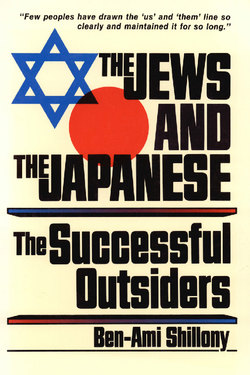Читать книгу Jews & the Japanese - Ben-Ami Shillony - Страница 7
На сайте Литреса книга снята с продажи.
ОглавлениеPreface
IT IS DIFFICULT to imagine two more widely different—almost incompatible—societies than those of the Jews and the Japanese: a people spread over the four corners of the world versus a people with an almost uninterrupted history of sovereignty in its own land; geographical heterogeneity versus linguistic and cultural homogeneity; a cosmopolitan experience versus an island mentality; strict religious and moral commandments versus group-based and aesthetically bound values. Yet, there are also surprising analogies between these two peoples. It is this extraordinary combination of similarities and differences that I would like to explore in this book.
The Jews and the Japanese are just two of the many interesting and unique peoples who inhabit this earth, two that are not ordinarily associated with each other. Yet over the last two centuries these two peoples have surprised the world, both by what they have done and by what has been done to them. Their outstanding achievements and immense tragedies, their enthusiastic attempts at integration into the Western world and their repeated rejections by it, their epochal transformations in the nineteenth century and again after World War II, and their present dilemmas of survival and direction—all these are significant stories with strong common elements that need to be studied and analyzed.
The purpose of this book is to compare the rich cultural heritages and historical experiences of the Japanese and the Jews from early times to the present and to see how these have influenced the behavior of each group. The book then looks at the ways these "successful outsiders" have interacted with the Christian West as well as with each other throughout the stormy course of their modern histories.
As a Jew, an Israeli, and a longtime student of Japan, I thought it was my duty to tackle this subject, to connect the several worlds in which I live. A comparative study of the Jews and the Japanese may also help us to better understand both. The basic differences and the outstanding similarities can provide us with a new perspective on the religions, traditions, values, and modes of behavior of these two peoples.
Many friends and colleagues have helped me along the way in this undertaking. Nicholas Ingleton, the president of Charles E. Tuttle Company, and Barbara Brackett, the U.S. and international marketing director, were excited about the idea before they had seen even one written word of the manuscript. The Harry S. Truman Research Institute for the Advancement of Peace of the Hebrew University of Jerusalem, of which I had the honor to be chairman, provided me with the means to write this book and was considerate enough to tolerate my long absences while I was doing so. R. J. Zwi Werblowsky, Peter A. Berton, and David G. Goodman read parts of the manuscript and contributed thoughtful remarks. Frank Joseph Shulman provided me with important bibliographical and biographical data. Albeit A. Altman, Hans H. Baerwald, David Kranzler, Gerhard Krebs, Muramatsu Takeshi, Miyazawa Masanori, and Maruyama Naoki shared with me, over the years, some of the valuable information that they had acquired through personal experience and academic research. Harry Wall and Willy Stern were helpful in providing various reports and newspaper clippings, and my students David Oberman and Roberto Chait searched the libraries to find additional information. Emily Biederman made valuable remarks concerning content and style, and the Tuttle editorial staff added the finishing touches.
My warmest thanks and deepest gratitude go to my wife Lena, who put aside her own academic work in order to read, correct, advise, inspire, encourage, and retype parts of the book so that it could be ready in time. To her and my daughters Iris and Ruthy this book is dedicated.
—Ben-Ami Shillony
Jerusalem
